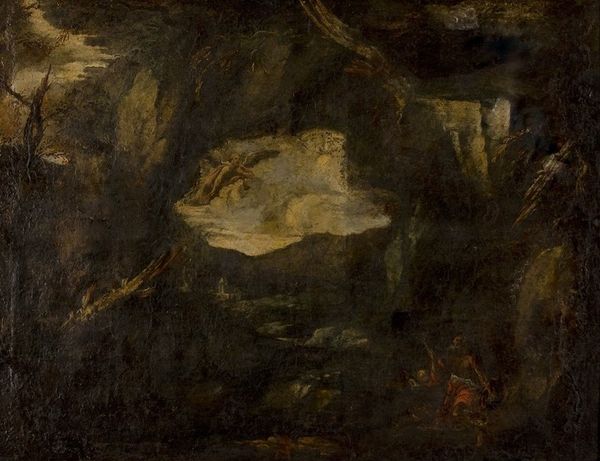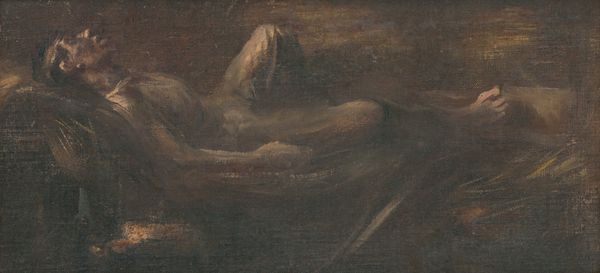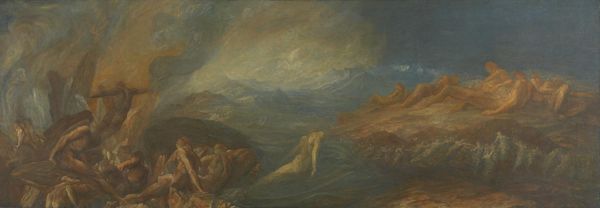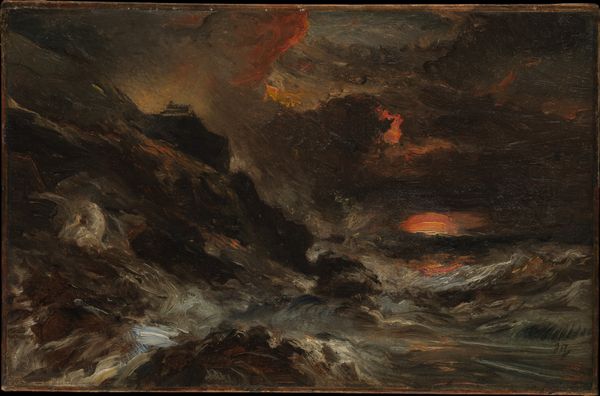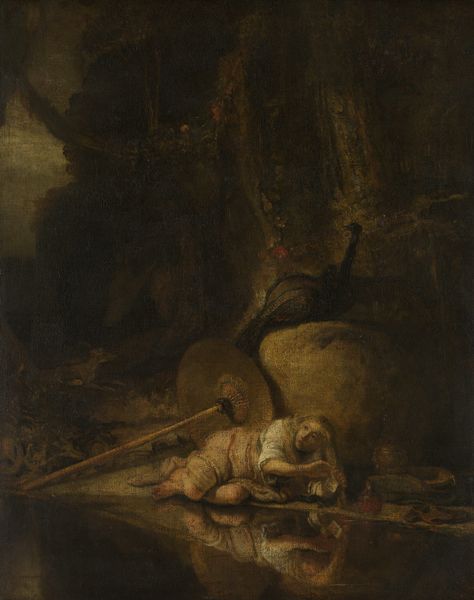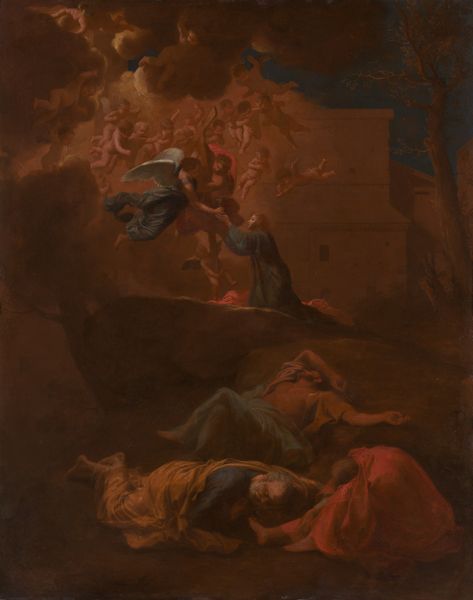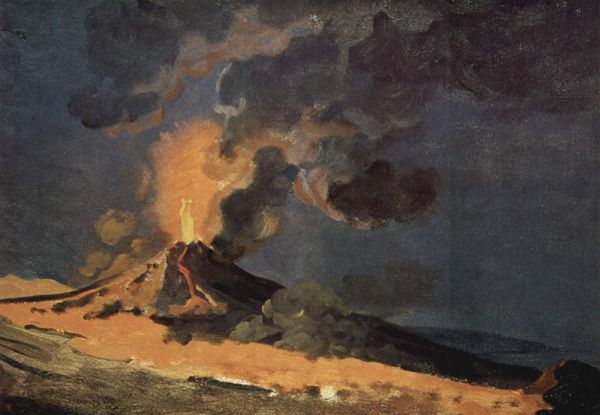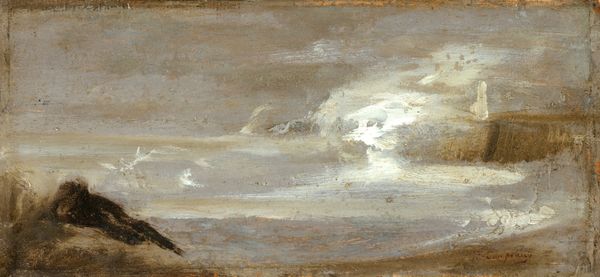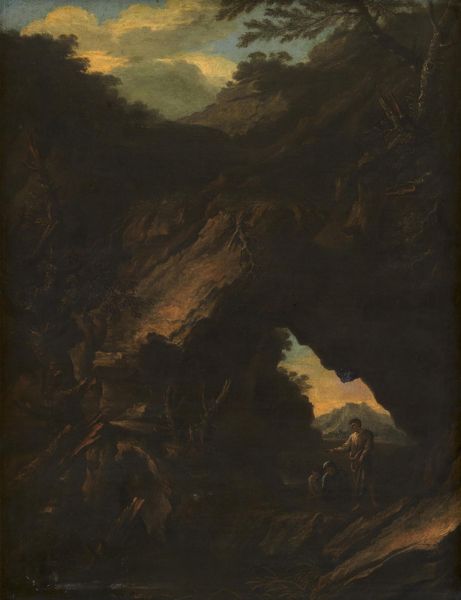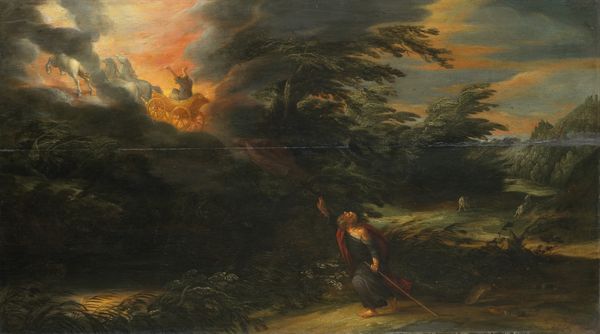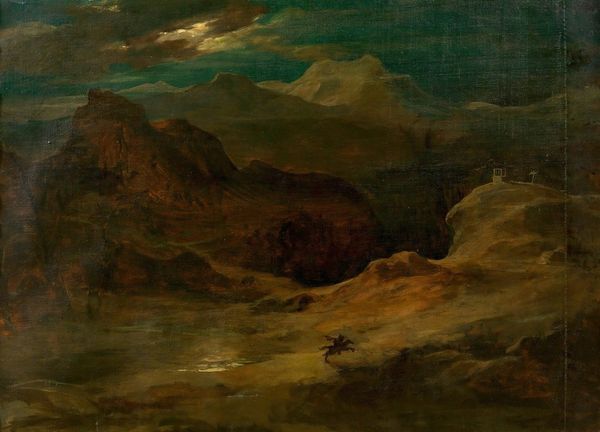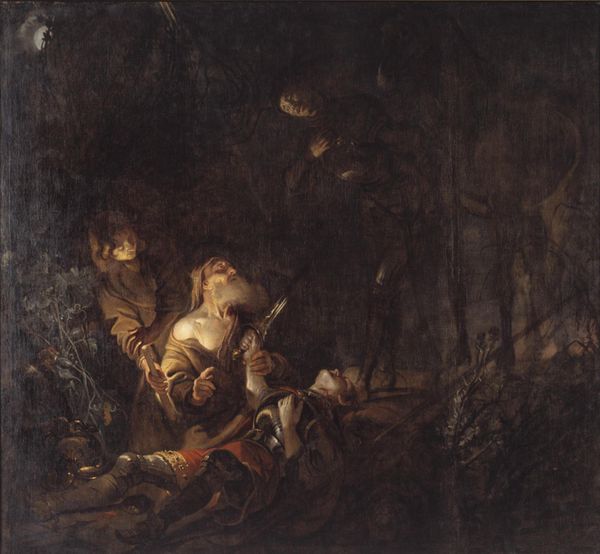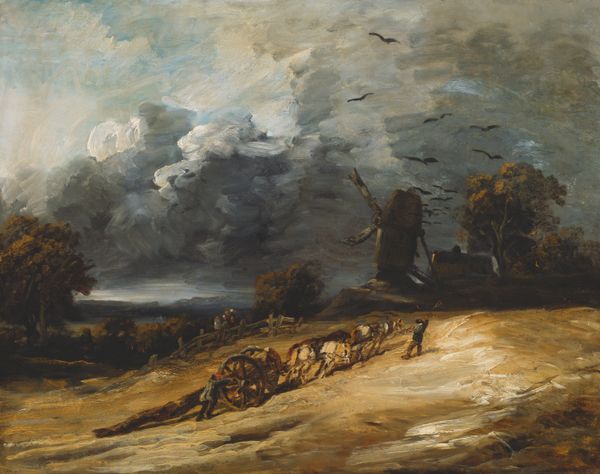
Battle in the desert 1842
0:00
0:00
jeanfrancoisportaels
Royal Museums of Fine Arts of Belgium, Brussels, Belgium
painting, oil-paint, charcoal
#
narrative-art
#
painting
#
oil-paint
#
landscape
#
charcoal drawing
#
oil painting
#
romanticism
#
charcoal
#
history-painting
#
charcoal
Dimensions: 36.5 x 58 cm
Copyright: Public domain
Curator: Jean-François Portaels painted this canvas, “Battle in the Desert,” in 1842. It’s held here at the Royal Museums of Fine Arts in Belgium. Editor: My first impression is that it’s incredibly moody, almost claustrophobic. The heavy dark hues, especially around that foreground figure, make me feel…trapped, maybe? And then there's this orange haze towards the back...what is going on? Curator: That intense, fiery backdrop and dense mass of figures immediately recall images of divine judgment and turmoil found in Romantic paintings, suggesting both destruction and purgation. Editor: I'm fascinated by the implied labor here. Think of the pigment grinding alone! And oil paints, even back then, weren’t cheap. Who commissioned this, and why? I wonder what canvas support lies beneath? It seems like Portaels used relatively thinned oil layers. This contributes to the subdued luminosity across the picture surface. Curator: That figure, huddled and face-down against what appears to be a pile of rubble...he's a powerful focal point, isn’t he? To me, this represents utter despair. The sweeping darks overhead seem to represent looming fatality. Portaels often infused his paintings with deep moral contemplation, drawing from biblical and classical tales, yet always highlighting universal themes of human struggle. Editor: Yes, the visual weight certainly presses down upon that lone figure. But I keep considering the actual physicality. Look at those broad, sweeping brushstrokes shaping the turbulent sky. It gives a textural weight that almost competes with the supposed subject of the desert battle. I find myself questioning how such turbulent skies affect this work as a manufactured item within a 19th-century artistic economy? Curator: It's true, his use of such active skies and compressed figuration, heightens the emotional experience for the viewer. The cultural memory and emotional resonance associated with this symbolic palette can evoke powerful feelings related to abandonment and hopelessness. Editor: Absolutely. Examining these choices really forces one to reflect upon painting as an enterprise that implicates painterly gestures, social narratives, and material affordances into one composite representation. Curator: I appreciate how it reveals to us still another angle through which to view cultural memory. Editor: Indeed. The conversation, perhaps, should now return back to its viewers to explore how they can internalize and process these symbolic landscapes through their lived realities.
Comments
No comments
Be the first to comment and join the conversation on the ultimate creative platform.
